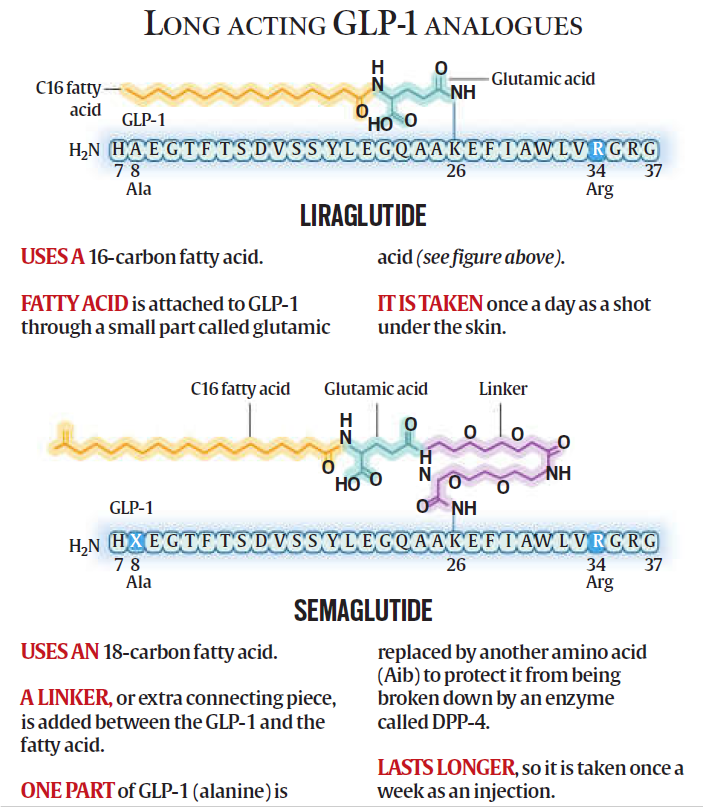After obesity, GLP-1 research focused on Alzheimer’s… hypothesis centres on its ability to reduce inflammation in the brain… this is different from current approaches
| Context |
|
Background
- GLP-1 (Glucagon-like peptide-1): A hormone involved in regulating blood sugar and appetite.
- Originally developed to manage type-2 diabetes, GLP-1 analogues also became revolutionary in treating obesity by reducing appetite and promoting weight loss.
- Recent findings suggest GLP-1 may have neuroprotective properties, sparking interest in Alzheimer’s research.
- Alzheimer’s is currently treated with drugs targeting amyloid plaques, but these have limited success.
Mechanism to reduce blood sugar
Liraglutide and Semaglutide are both GLP-1 receptor agonists (GLP-1 drugs). Long-acting analogues (e.g., Liraglutide, Semaglutide) have extended activity from minutes to 160 hours, enabling weekly dosing.
- GLP-1 Drugs Mechanism: Mimic natural GLP-1 to lower blood sugar, reduce hunger, and control weight.
- New Research Hypothesis: GLP-1 can reduce neuroinflammation in the brain, a key factor in Alzheimer’s progression. This approach is fundamentally different from amyloid-targeting therapies, which are traditionally used.
- Impact on Obesity & Diabetes: GLP-1 drugs have dramatically improved health outcomes, reducing mortality, heart disease, and obesity rates globally.
Implication
- Medical Breakthrough Potential: If successful, GLP-1 therapy could transform Alzheimer’s treatment, shifting from plaque-centric to inflammation-focused approaches.
- Public Health Impact: Dual benefits for metabolic disorders and neurodegenerative diseases could significantly reduce global disease burden.
- Pharmaceutical Innovation: May spur new drug development, increasing investment in multi-target therapies.
Ethical & Economic Aspects:
This, however, raises concerns over drug affordability, access, and long-term safety in chronic neurological conditions.

